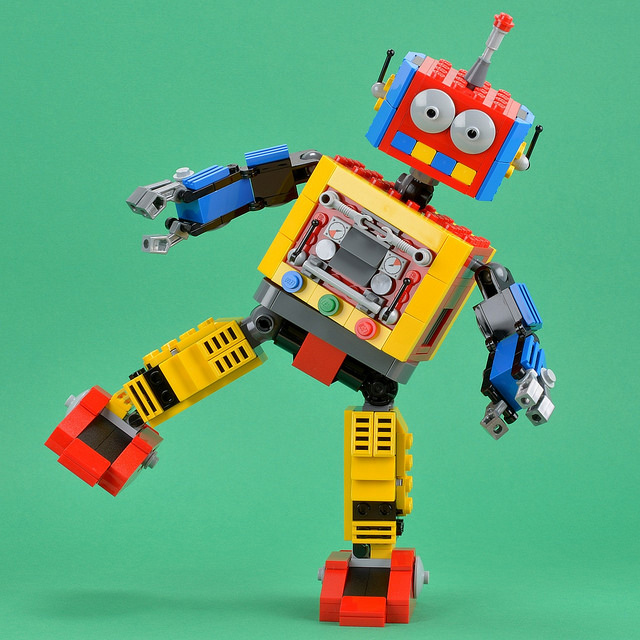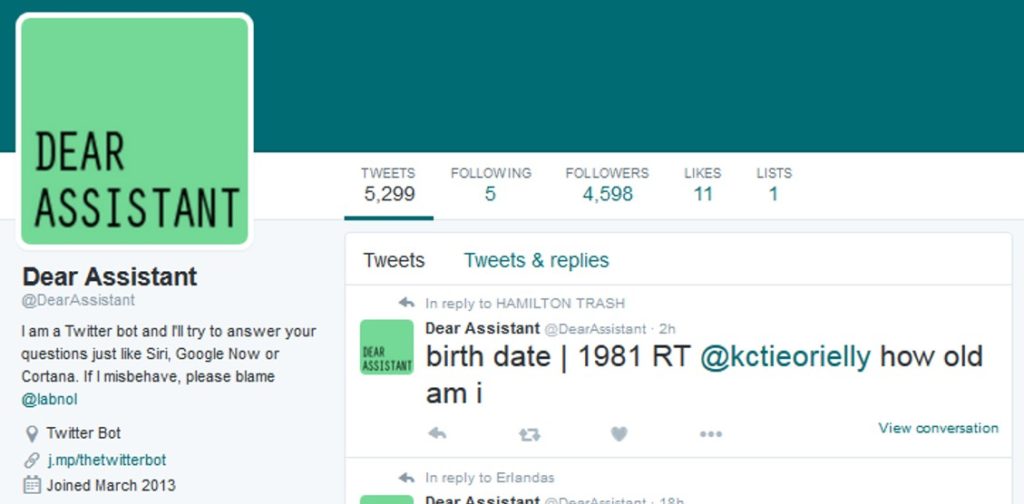2016 Digital Day of Ideas (#DigScholEd) – Workshop – Make Your Own Chat Bot

It was pleasure to spend an inspiring day at the University of Edinburgh on 18th May 16 for the fifth annual Digital Day of Ideas (#DigScholEd).
The day was gently paced, with three thoughtful keynote presentations from Karen Gregory, Lorna Hughes & Ted Underwood (videos are online) and ample breaks for refreshments and conversation.
In the afternoon I took part in a workshop to Make Your Own Chat Bot with Siân Bayne , Kathrin Haag and Stewart Cromar.
Sian started the session by giving an overview of ‘Twitter bots’ – programmes that produce automated posts on Twitter. She pointed us to some interesting examples:
DEAR Assistant – I am a Twitter bot and I’ll try to answer your questions just like Siri, Google Now or Cortana.
LA QuakeBot – I am a robot that tells you about earthquakes in Los Angeles as they happen
Restroom Genderator – random restroom gender sign generator. extant (and not so extant) genders with random symbols.
Siân questioned the idea that teaching jobs will be taken over my robots, referring us to the Oxford Martin Project – and the ‘Will a robot take your job?’ tool. In the 2016 Manifesto for teaching online she and colleagues say “Automation need not impoverish education: we welcome our new robot colleagues.”
Siân then talked about the ‘teacherbot’ project, which the teaching team developed for E-Learning and Digital Cultures MOOC. The teaching team programmed the Teacherbot to respond to questions from students on this massive open online course. To do so the project developed a Graphical User Interface (GUI) for teachers with no code experience to use.
After this introduction we had some hands on experience – using PandoraBots (Information Services have a subscription) which uses AIML Artificial Intelligence Mark-up Language – it can be used with Twitter but could also be used in other platforms. The team talked us through setting up a PandoraBots playground creating a bot and adding and editing responses. At the end of the session these were uploaded into the Teacherbot test account so we could test them on Twitter. It was really satisfying to see how easily this can be achieved.
This has left me considering… How could we use this? Could we offer service support for learning technology services? Do staff and students want to find out their answers on Twitter? Would it be useful for promotion or engagement activities?
Is this fun or practical? Or maybe a bit of both?
If you are interested in finding out more, take a look at Teacherbot – A Twitterbot pilot service.







